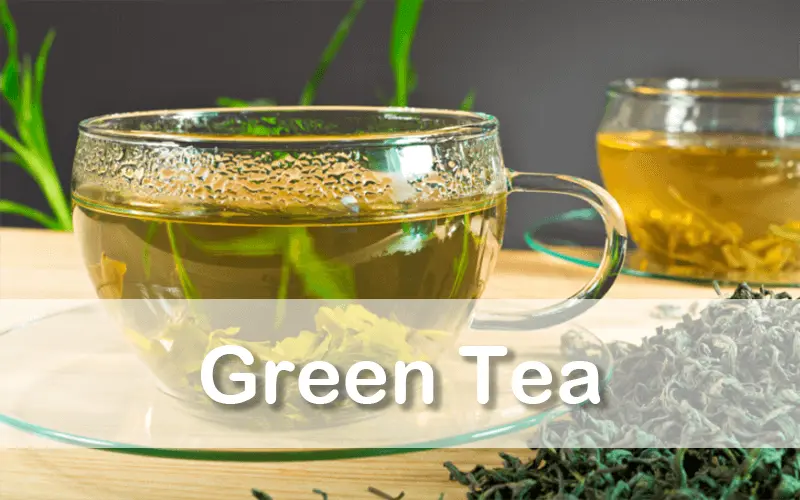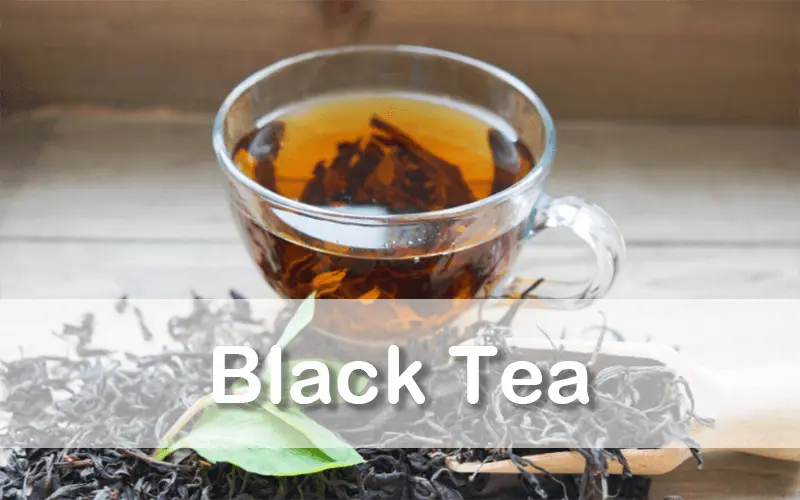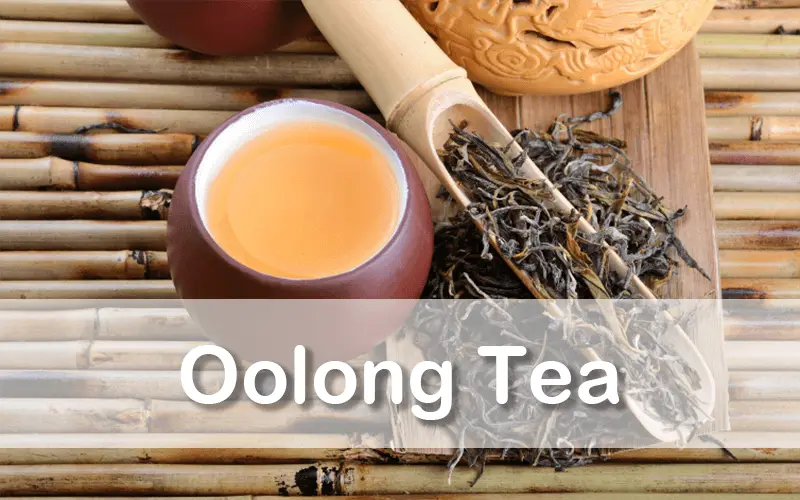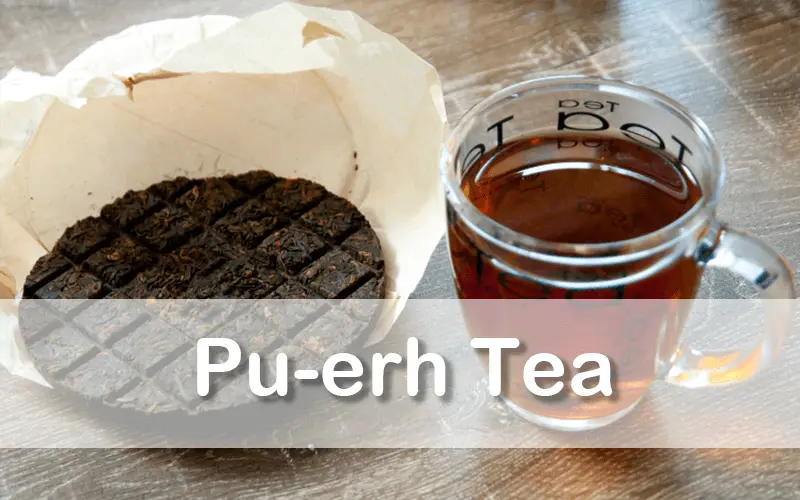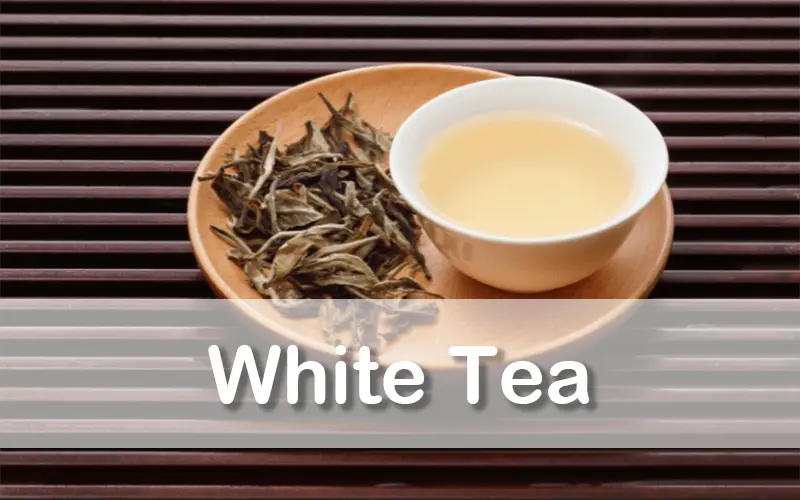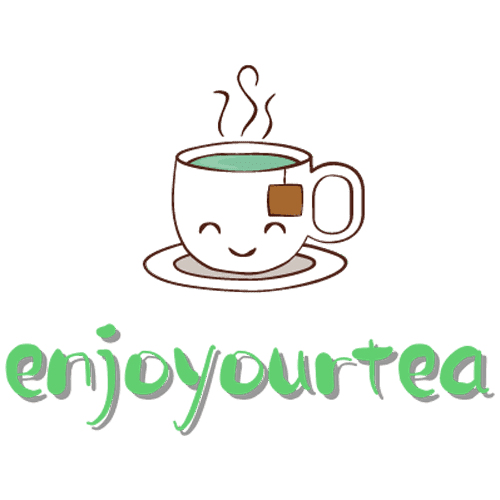
Shifeng Longjing, also named Lion Peak Longjing, is renowned for the finest variety of West Lake Longjing tea.
Despite its fame, a few individuals have had the opportunity to savor this exquisite tea, even within Hangzhou.
You might be curious about the following aspects:
- What exactly is shi feng long jing?
- How does it distinguish itself from other Long jing dragon well tea?
- What is the appearance of authentic shi feng long jing?
- What is its flavor profile after steeping?
- What key factors should you consider when purchasing Shifeng Longjing?
Come with me to look deeper into it.
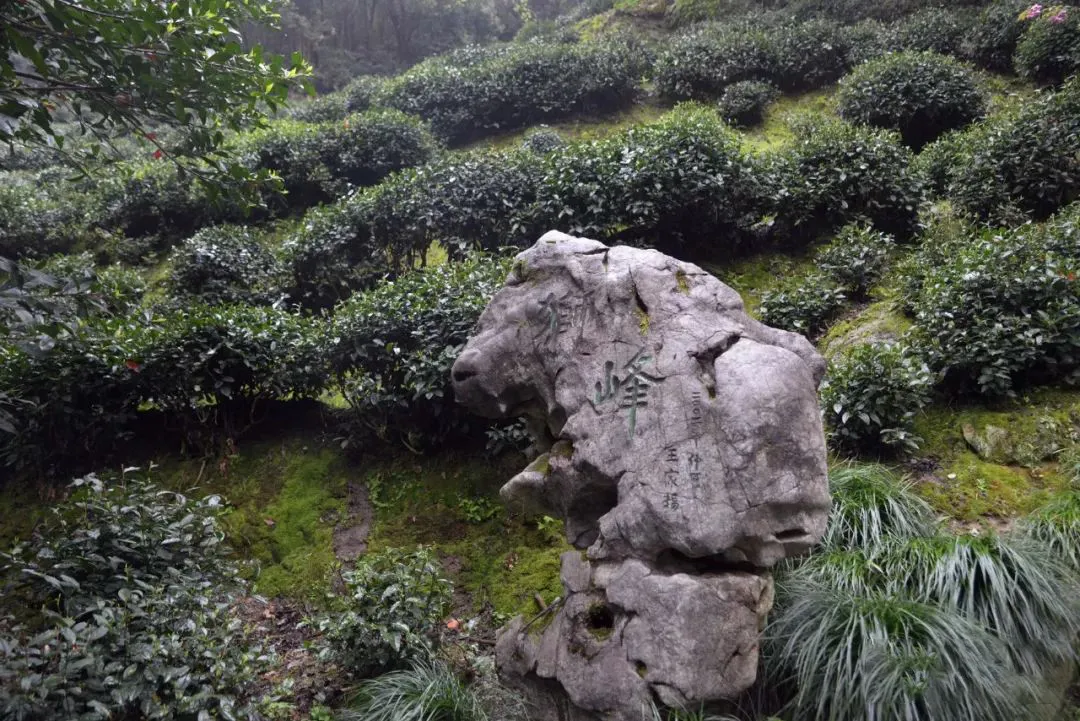
The Origins of Shi feng Long jing Tea
A profound Chinese proverb advises, “To comprehend the essence of a thing, one must explore its roots.”
It tells us to underscore the significance of understanding the origins.
So, what is the historical backdrop of Shifeng Longjing tea?
There are various narratives of Longjing tea, yet the most prevalent version is rooted in the folklore of Hangzhou locals.
Legend has it that during the Northern Song Dynasty (1079 AD), a venerable monk named Master Bian Cai chose to withdraw from the Upper Tianzhu Temple.
He spent his twilight years in an antiquated and dilapidated monastery nestled at the base of Shifeng Mountain, known as “Shou Sheng Yuan.”
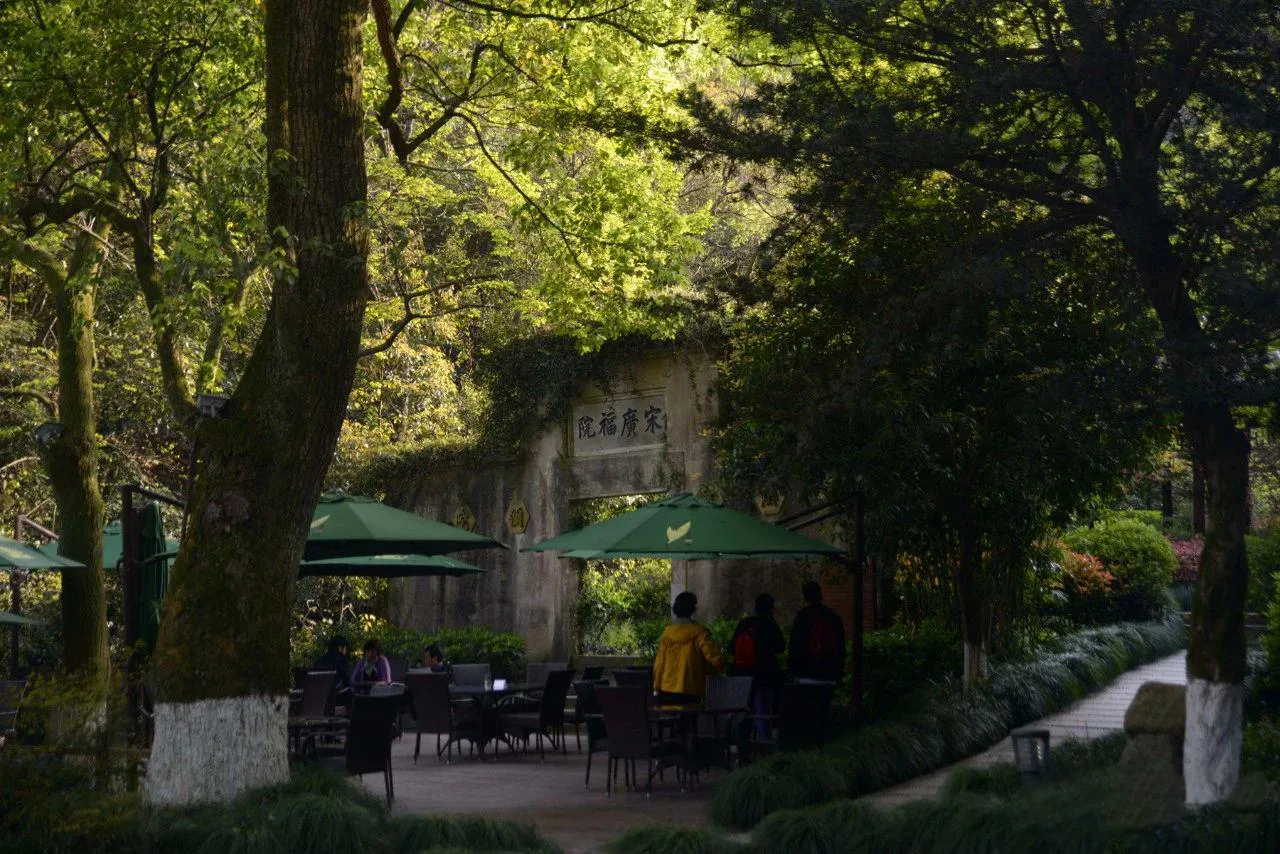
Ruins of Song Guang fu yuan
Word of his presence quickly spread to neighboring Buddhist devotees, who wholeheartedly contributed to restoring the temple’s statues and refurbishing the Shoushing Temple.
Master Bian Cai, conscious of his inability to reciprocate this generosity, embarked on a collaborative effort with his disciples to cultivate tea on the adjacent hillsides.
It is said that the tea trees on Shifeng Mountain were transplanted from the revered Tianzhu and Lingyin Temples by a cohort of monks and their disciples under the guidance of Master Bian Cai.
With the continuous arrival of visitors and the ever-increasing demand for tea, the once-forested area around the temple slowly transformed into flourishing tea plantations.
It marked the inception of tea cultivation in the village of Longjing, solidifying its status as the cradle of Longjing tea.

Statue of Su Dongpo and Master Bian Cai
During the Ming Dynasty, the reputation of Longjing tea began to transcend temple boundaries, finding its way into the homes of ordinary people.
During the Ming Wanli era, the “Qiantang County Records” documented, “Longjing tea exudes a bean flower fragrance, boasts a sweet taste, and features a unique color profile distinct from other teas.”

Longjing Spring under Shifeng Mountain
During the Qing Dynasty, Longjing tea became famous due to its popularity among the emperors.
Legend has it that Emperor Qianlong visited the Longjing tea region 4 times to witness tea plucking, savor the tea, and compose poetry.
He even bestowed the title of “imperial tea” upon the 18 tea trees near Hu Gong Temple.
These tea trees still thrive, visible even in the heart of Longjing Village.
As you delve into the village’s innermost reaches, you’ll encounter the renowned 18 imperial tea trees, along with ancient Longjing tea trees, serving as a testament to the tea’s rich heritage.
Beyond this, as you ascend the mountainside, a mesmerizing expanse of tea plantations awaits, cascading along the landscape.
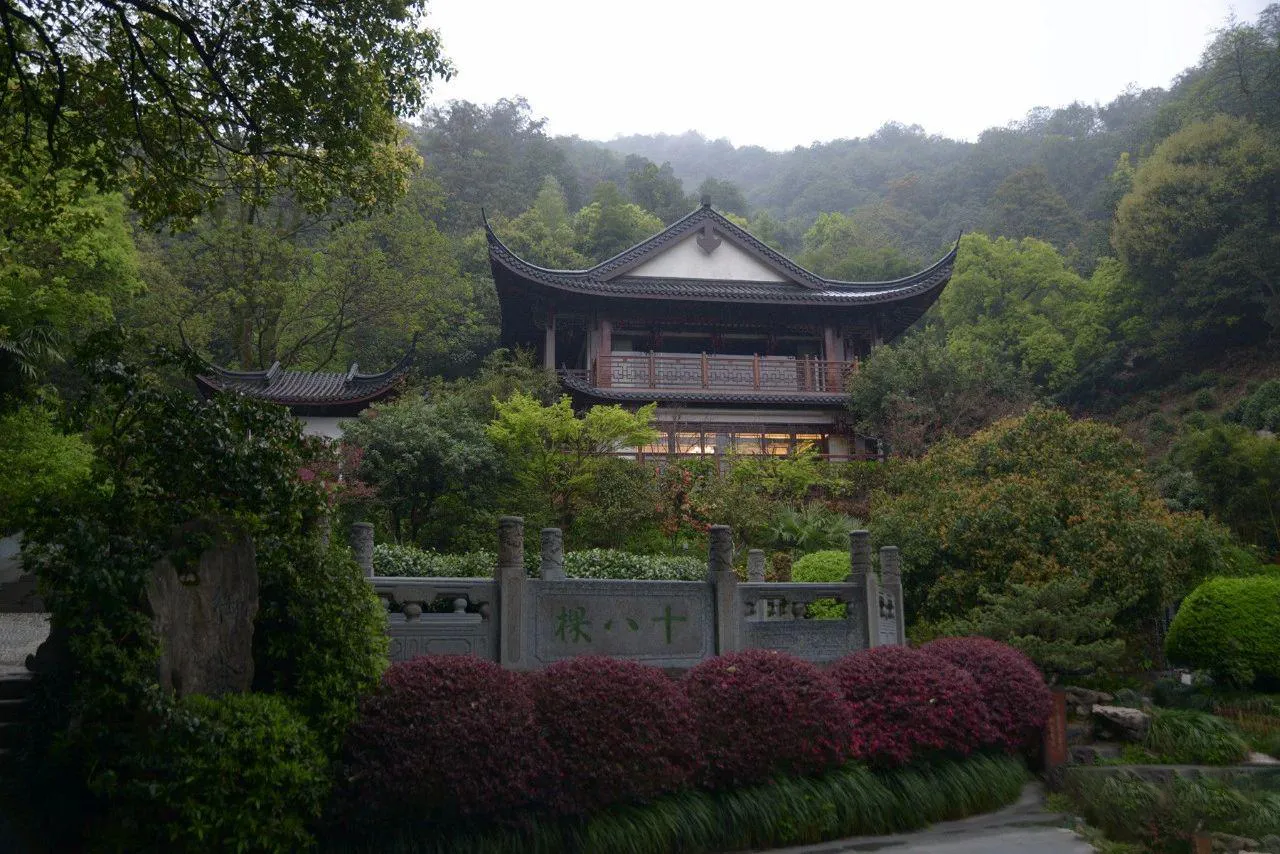
Imperial Tea Garden
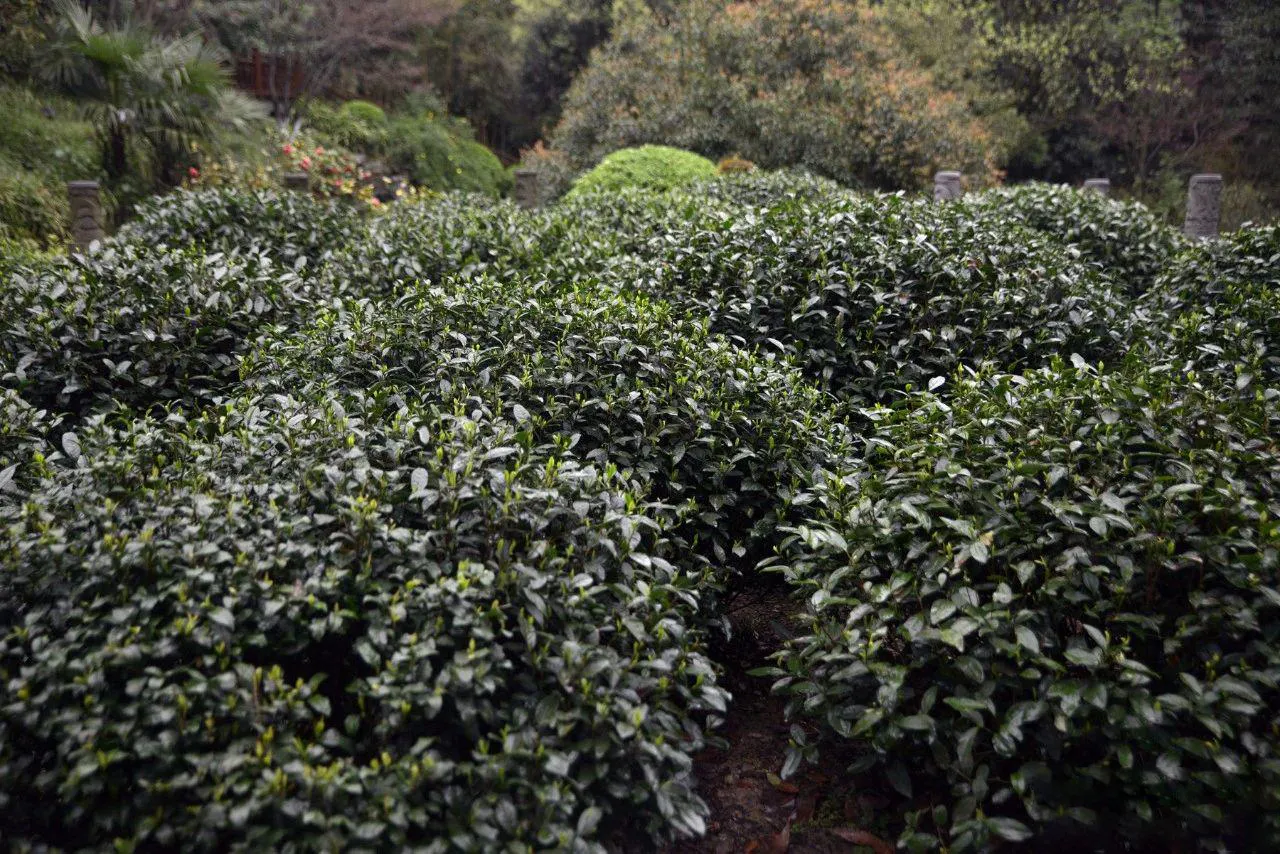
18 Tea Trees in the Imperial Tea Garden
Definition of Shifeng Longjing
So, what exactly is Shifeng Longjing?
It’s worth noting that there are 2 distinct types of tea in the market, both referred to as Shi Feng Longjing, each characterized by significant disparities in terms of quality and price.
Traditional Shifeng Longjing tea
When most tea connoisseurs envision authentic Shifeng Longjing, they think of the Longjing tea originating from Shi Feng Mountain in Longjing Village, Hangzhou.
Shifeng Mountain lies at the heart of the premier production area for West Lake Longjing.
The traditional Shifeng Longjing meticulously crafts using the tender buds of tea trees from this region.

Longjing Village from Shifeng Mountain
We’ve touched upon this in our comprehensive Longjing Tea Guide, highlighting the national standard for Longjing tea, known as the “Geographical Indication Product Longjing Tea GB/T 18650-2008.”
However, this standard primarily defines Longjing tea and does not provide specific criteria for Shi Feng Longjing.
2018 New Standard Shi Feng Longjing Tea
In 2018, led by the Hangzhou West Lake Longjing Tea Core Producing Area Chamber of Commerce, a pioneering group standard for tea classification was introduced in Zhejiang Province.
This standard, known as “Shi Feng Longjing Tea Group Standard T/XHS 001-2018,” collectively designates the Longjing tea produced within the jurisdiction of the Hangzhou West Lake Scenic and Historic Spot (West Lake Longjing Tea Base Level 1 Protected Area) as Shifeng Longjing, marking a new phase in the characterization of this esteemed tea.
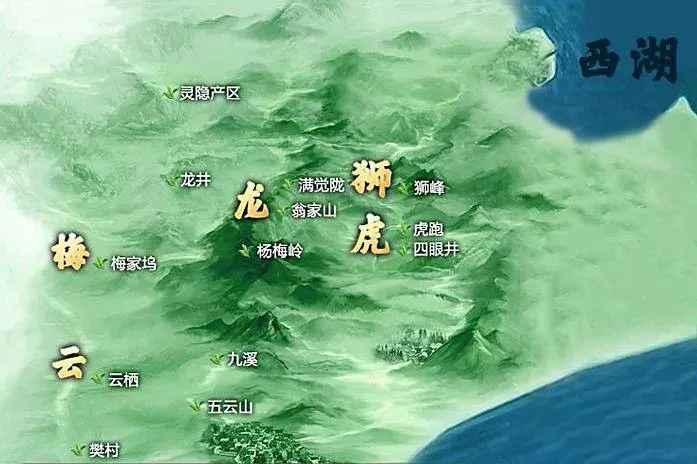
Shifeng Longjing Appellation Defined by New Standards
The recently defined Shifeng Longjing tea production area encompasses a larger expanse than the combined areas of the 5 historical regions: Shifeng Mountain, Longjing Village, Yunqi Mountain, Hupao Spring, and Meijiawu.
It’s important to note that certain areas yield tea that varies significantly from the authentic Shifeng Longjing in terms of appearance, aroma, and flavor.
As a result, when making a purchase, you first ascertain whether you are seeking the traditional Shifeng Longjing tea.
Then, engage with the seller to ensure their offering aligns with your preferences and requirements.
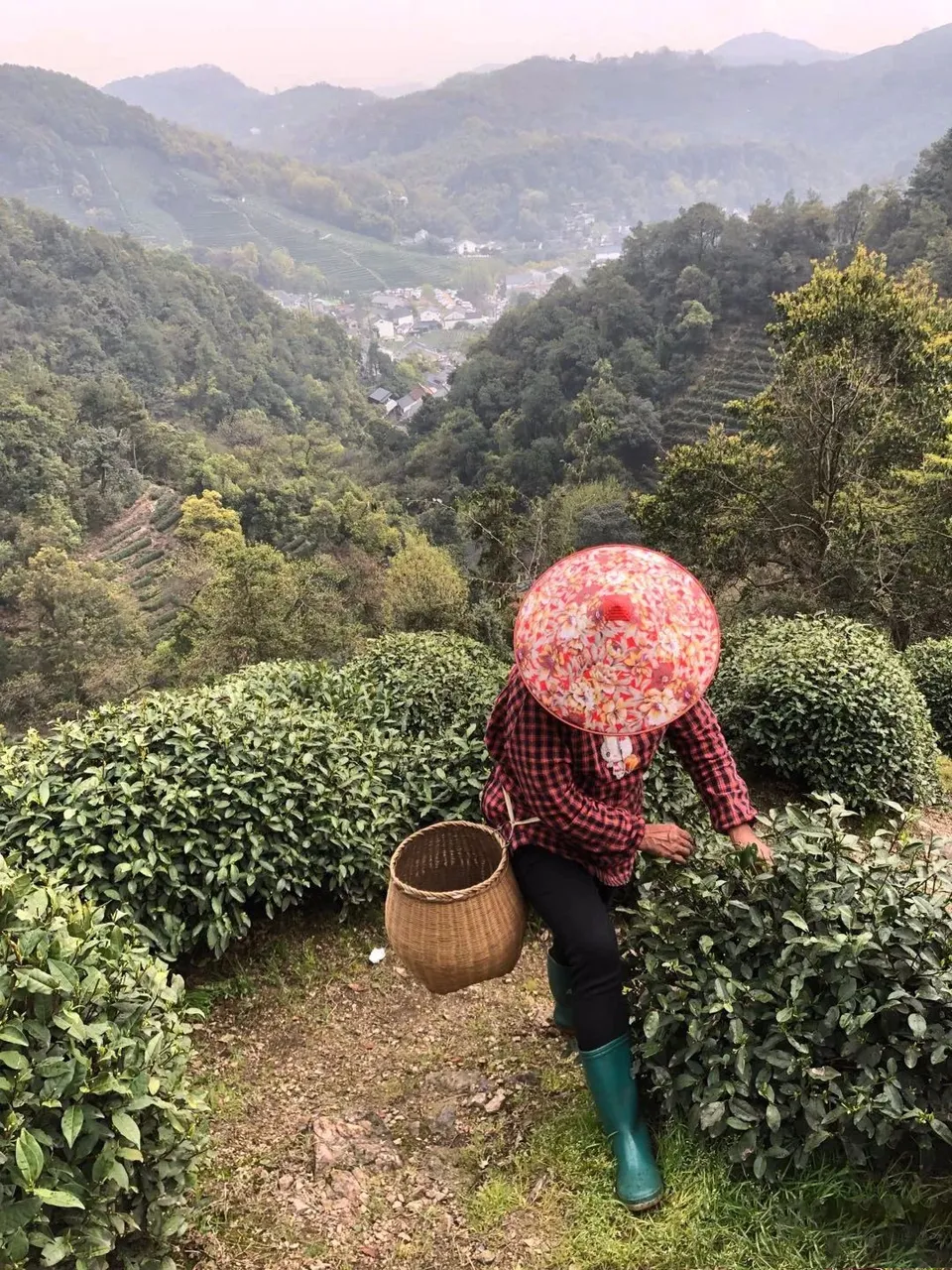
Tea farmers are picking tea on Shifeng Mountain
Nevertheless, it’s important to note that teas from other regions are also of excellent quality and boast unique characteristics.
Shifeng Longjing is one of them, and with the best reviews.
Its origin does not solely determine the quality of Longjing tea; it is also linked to the careful cultivation of tea gardens, the delicate craft of tea leaf picking, and the precision of processing methods.
Therefore, as long as the tea is meticulously nurtured and processed within the West Lake Longjing Protected Area, it delivers exceptional quality.
Why is Shifeng Longjing better?
To uncover the factors that contribute to the esteemed reputation of shi feng dragonwell, one must focus on 3 key elements:
Geographic Location
Shifeng Mountain, situated at approximately 358 meters above sea level, occupies the southwestern region between Longjing Village and Meijiawu.
Locals often refer to it as Shifeng Mountain due to its resemblance to a reclining lion when viewed from a distance.
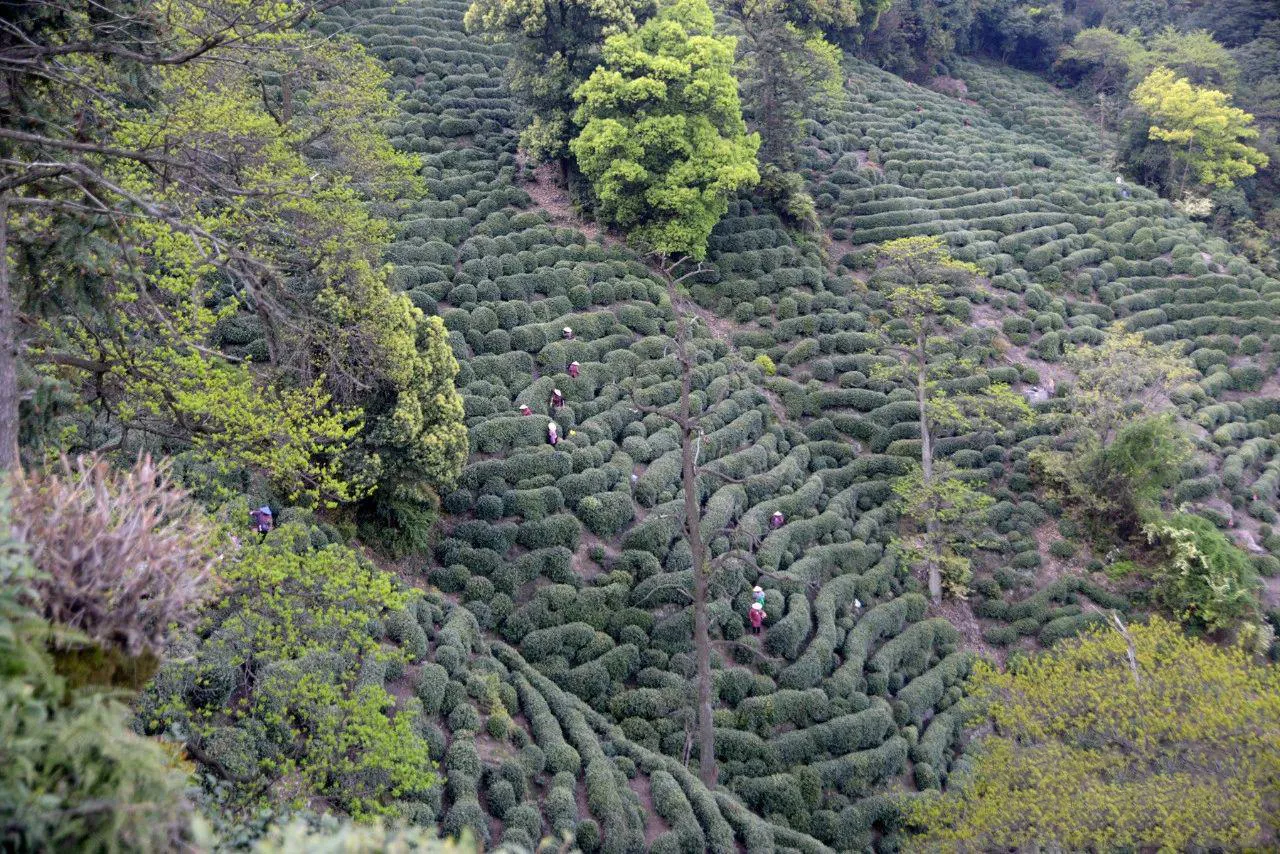
Shifengshan Tea Plantation has a favorable geographical and ecological environment
Shifeng Mountain nestles east of Xizi Lake, bordered by Wuyun Mountain to the west, flanked by the waters of the Qiantang River to the south, and sheltered by the North Peak to the north.
This mountainous terrain boasts an average annual temperature of (61℉)16.1°C, with humidity levels exceeding 80% and a yearly rainfall of approximately 1,500mm.
Longjing Village is strategically situated beneath Shifeng Mountain, where the tea gardens thrive on the southern slopes.
This location enjoys ample sunshine and the natural protection of Shifeng Mountain, shielding it from the chilling northwest winds of early spring.
The valley’s basin-like topography effectively moderates the airflow, ensuring a relatively stable temperature during the tea tree’s germination season.
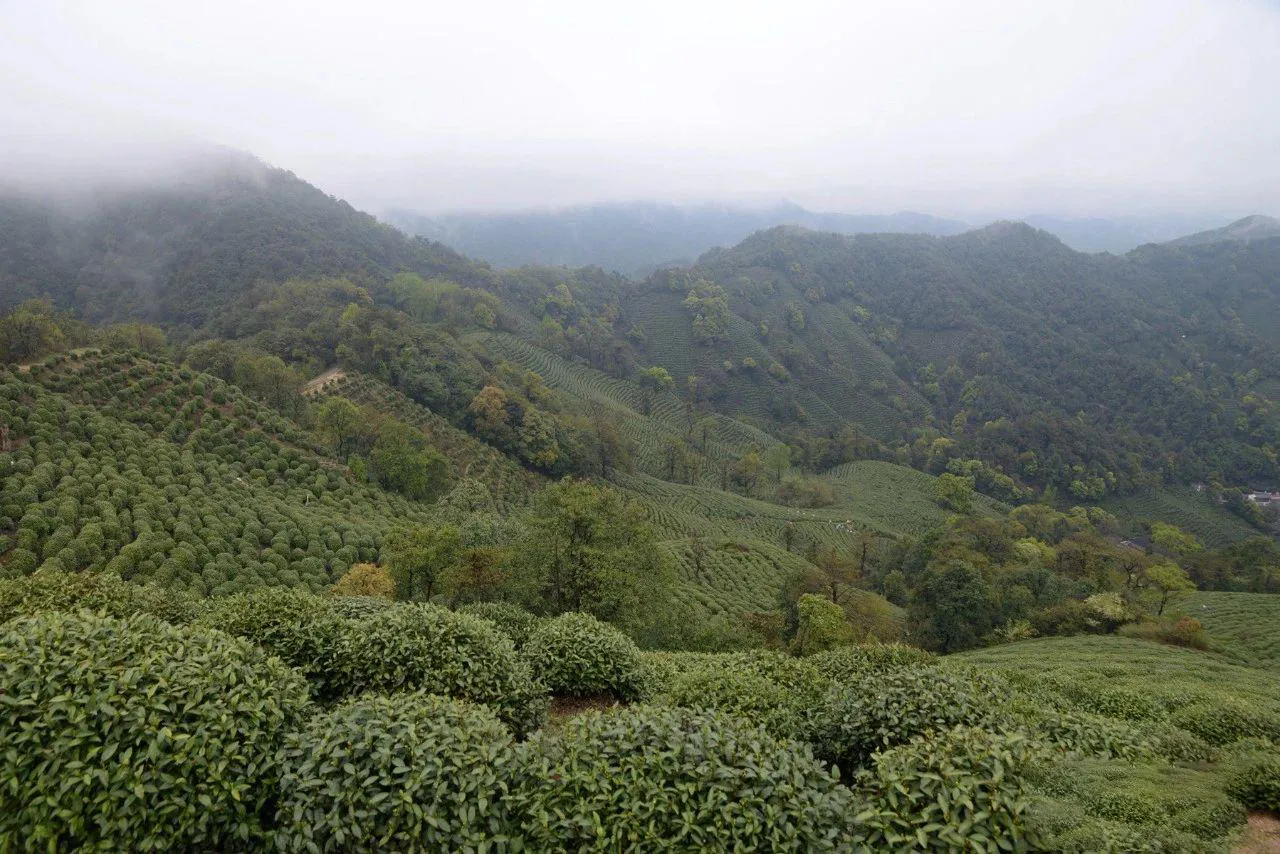
Shifengshan Tea Plantation
Soil Environment
The soil in this region primarily comprises quartzite residual deposits, siltstone, and silty mudstone resulting from the weathering of white sandy soil and loess.
These soil characteristics offer exceptional permeability.
Furthermore, numerous tea trees on Shifeng Mountain thrive on steep slopes.
Despite the elevated levels of rainfall in Hangzhou, the tea plantations remain well-drained, preventing waterlogging.
This favorable condition supports the respiration of the tea tree roots, allowing them to flourish vigorously with minimal need for artificial intervention.
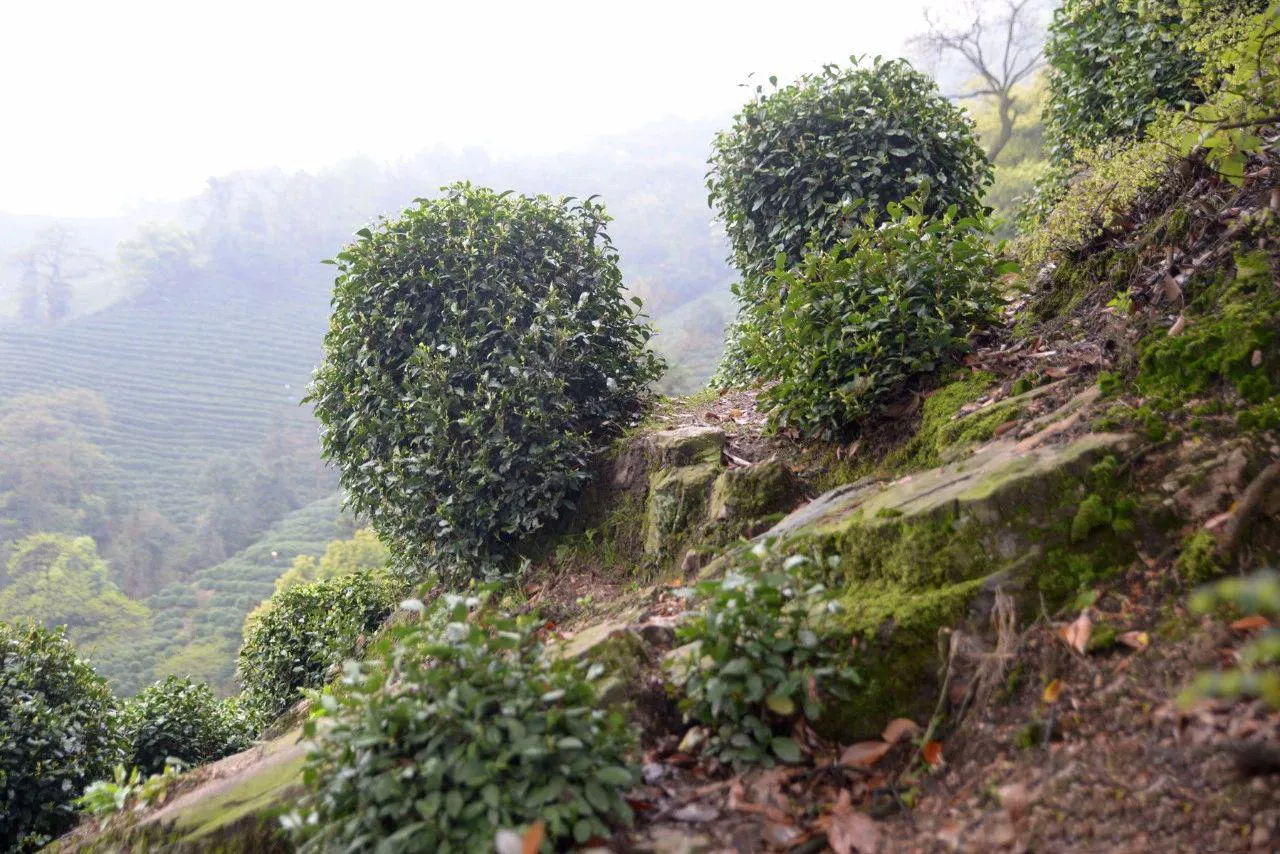
Shifeng Mountain Tea Plantation Soil
Furthermore, the ground beneath the tea trees supports the growth of various herbs and mosses.
These natural elements serve a dual purpose by preventing excessive soil and water loss while also undergoing decomposition to enrich the soil with humus, supplying essential nutrients to the tea trees.
This organic process contributes to a reduction in the reliance on industrial fertilizers.
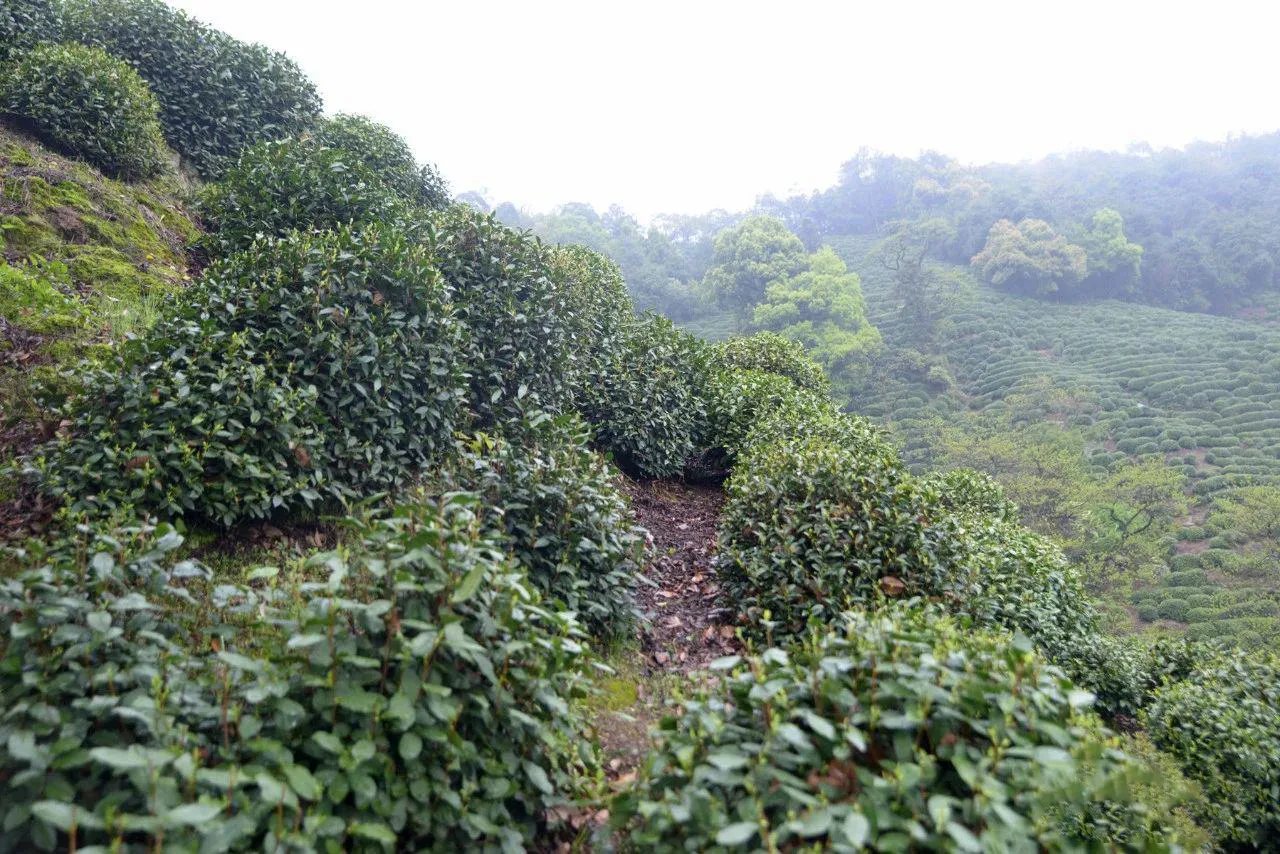
Moss in the tea bushes of Shifeng Mountain
Most tea trees on Shifeng Mountain belong to group cultivars and receive natural organic fertilizers like government-subsidized rapeseed cake.
Insecticide application is conducted under the oversight of relevant authorities.
This harmonious blend of a favorable ecological environment and precise planting management practices elevates the quality of Longjing tea from Shifeng Mountain.
While not considered wild tea, it surpasses the quality of wild tea, resulting in an aroma that stands as the most exquisite within the realm of West Lake Longjing tea.
Climatic Conditions
Tea trees thrive in a warm and humid climate, with the optimal temperature for tea bud growth falling within the range of 68-77℉ (20-25°C) and buds beginning to sprout at temperatures exceeding 50℉ (10°C).
Hangzhou experiences daytime temperatures during mid to late March that align perfectly with these requirements, fostering the accumulation of essential nutrients.
Meanwhile, the relatively lower nighttime temperatures on Shifeng Mountain act as a natural brake on tea tree respiration, reducing nutrient consumption.
Shifeng Mountain’s distinctive environmental and climatic conditions create the ideal habitat for Longjing tea trees, affording advantages that cannot be replicated in other production areas.
As local tea farmers succinctly put it, “the freshly plucked green leaves exude a fragrant aroma,” naturally producing superior tea quality.
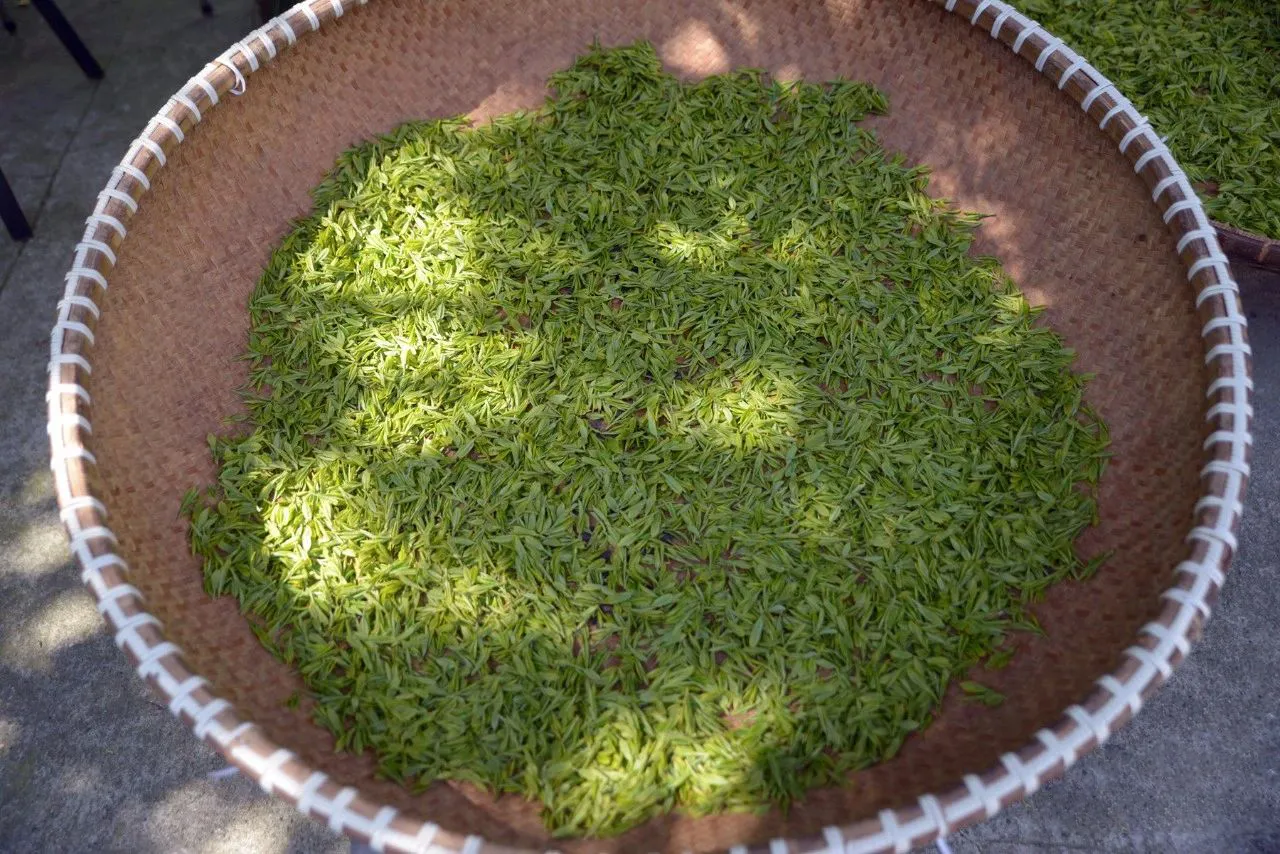
Freshly Picked Green Leaves of Lion Peak Longjing
What does Shi Feng Dragonwell look like?
Designated as the premium Xihu Longjing tea, it possesses distinct characteristics that are challenging to define precisely.
Nevertheless, I can provide an overview based on the following three key points.
Tea Form
In my experience, Shi Feng dragonwell tea should exhibit distinct visual characteristics compared to regular West Lake Longjing.
It typically features delicately plucked leaves without larger tea leaves, showcasing a handcrafted pan-firing process that may result in a slightly rough texture on the flat surface of the tea leaves.
When held, it imparts a sensation of increased weight and thickness, setting it apart from conventional Longjing varieties.
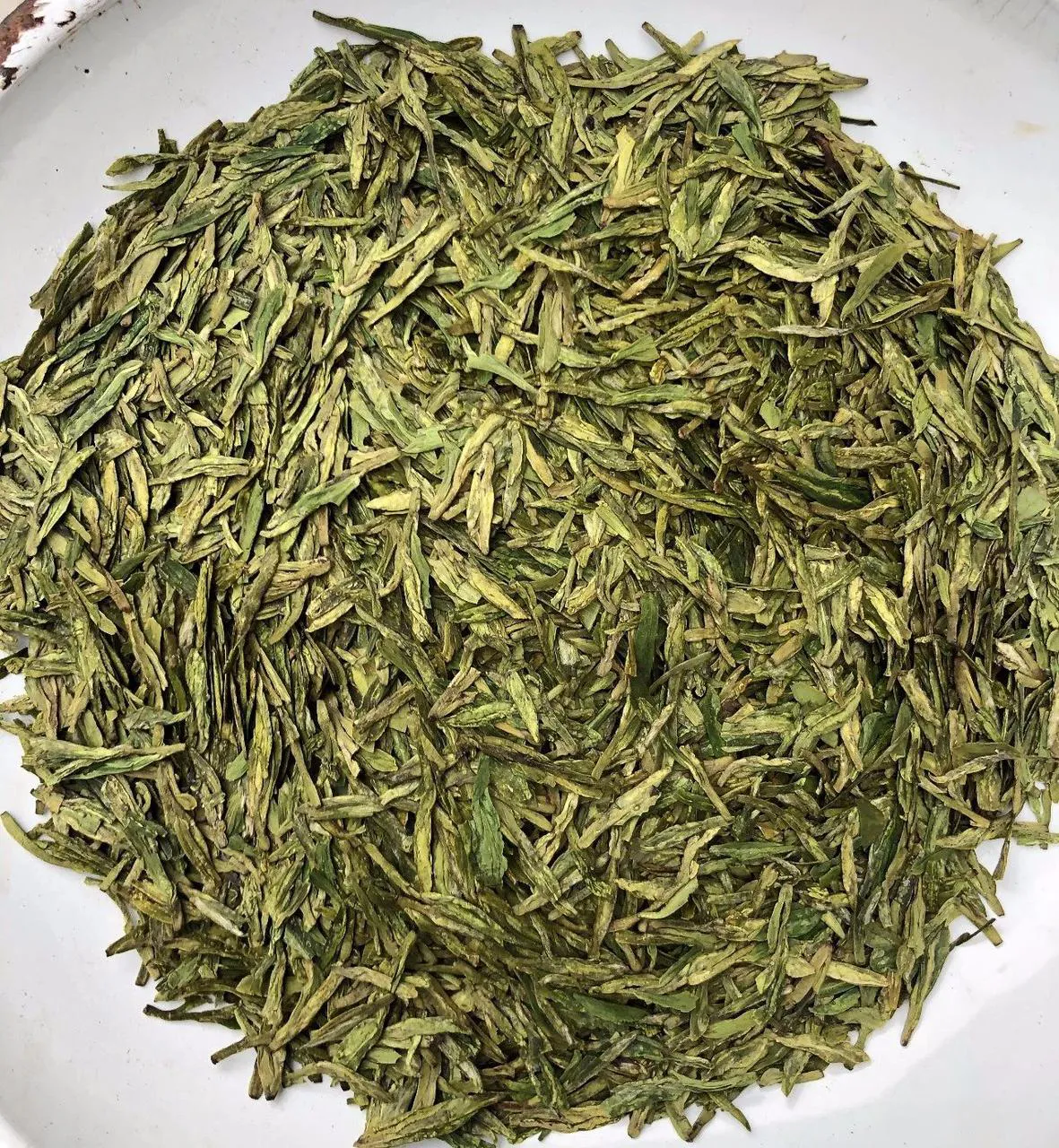
2023 group cultivar Shifeng Longjing tea
Since Shifeng Longjing primarily comprises group cultivar tea trees, its leaves tend to be less uniformly sized and more varied in length than Longjing #43.
Additionally, they may exhibit a slightly floral coloration, which, when evaluated based solely on appearance, might not be considered conventionally attractive.
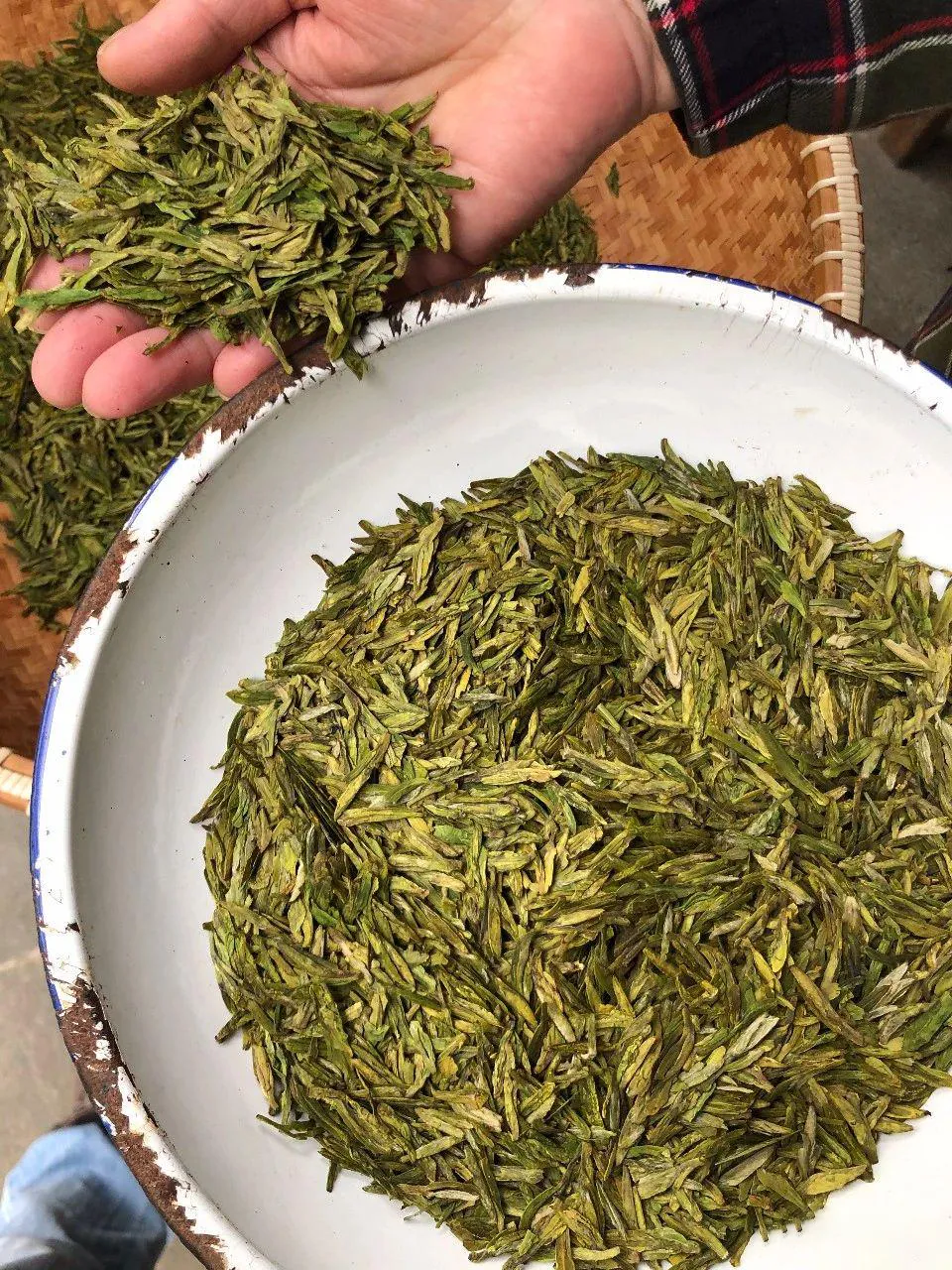
Shifengshan Longjing #43 vs. group cultivars (hand: Longjing #43, plate: group cultivars)
Color
Many connoisseurs describe the finest Shifeng Longjing tea as having a yellowish hue reminiscent of the color of brown rice.
While this characteristic holds true for some Shifeng Longjing teas, it’s important to note that it’s not a universal standard.
The color of tea leaves can vary based on when they are processed—those fried before and after the rainy season tend to exhibit a dark green color while pre-ming tea often features a tender yellowish-green shade.
Ultimately, the quality of the tea is determined by the freshness, oiliness, and vitality of the dry tea, whether it leans toward tender yellow or green.
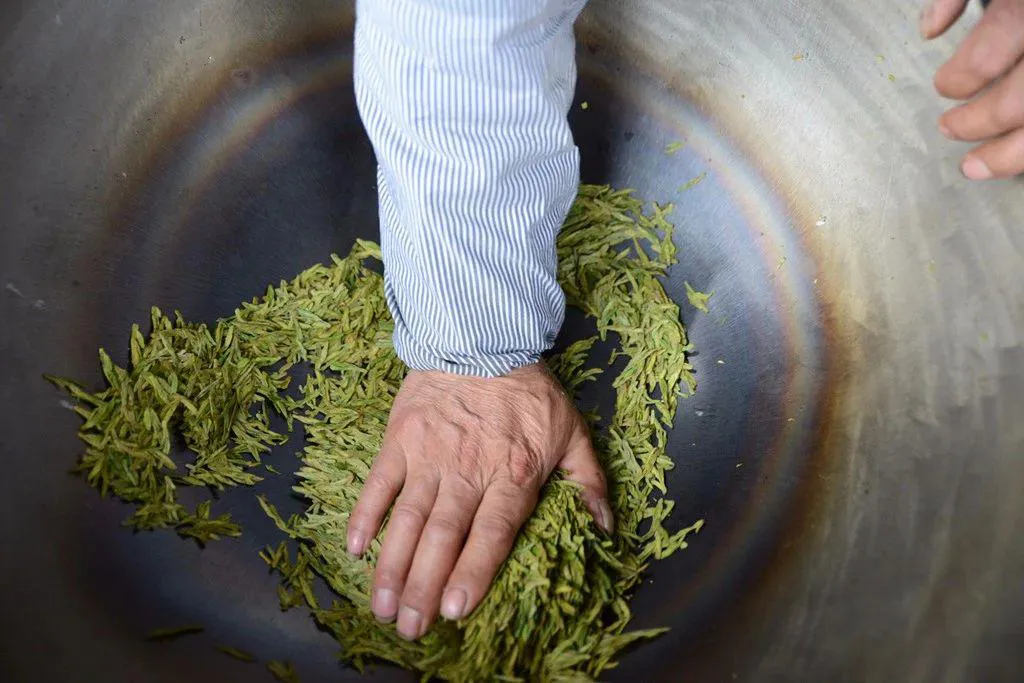
Tea farmers hand-frying Shifeng Longjing tea
In response to the growing demand for Longjing tea with a fresh floral flavor, influenced by certain Chinese Longjing tea brands, tea farmers in Longjing village have adapted their tea frying techniques.
As a result, the final product boasts a lively greenish color and a fresh, full-bodied, and mellow taste.
While it may not adhere to the traditional appearance of long jing Shi Feng now, the overall taste and quality have significantly improved.
Nevertheless, the accurate measure of its excellence is revealed when you brew and savor the tea.
How does Shi Feng Longjing taste?
Shi Feng Longjing cannot be accurately identified based solely on its appearance, but a relatively precise judgment can be made by evaluating its aroma, flavor, and leaf characteristics.
When preparing Longjing tea, it’s advisable to preheat the teaware and add the appropriate amount of dry tea, allowing you to inhale the tea’s aroma while it’s still hot.
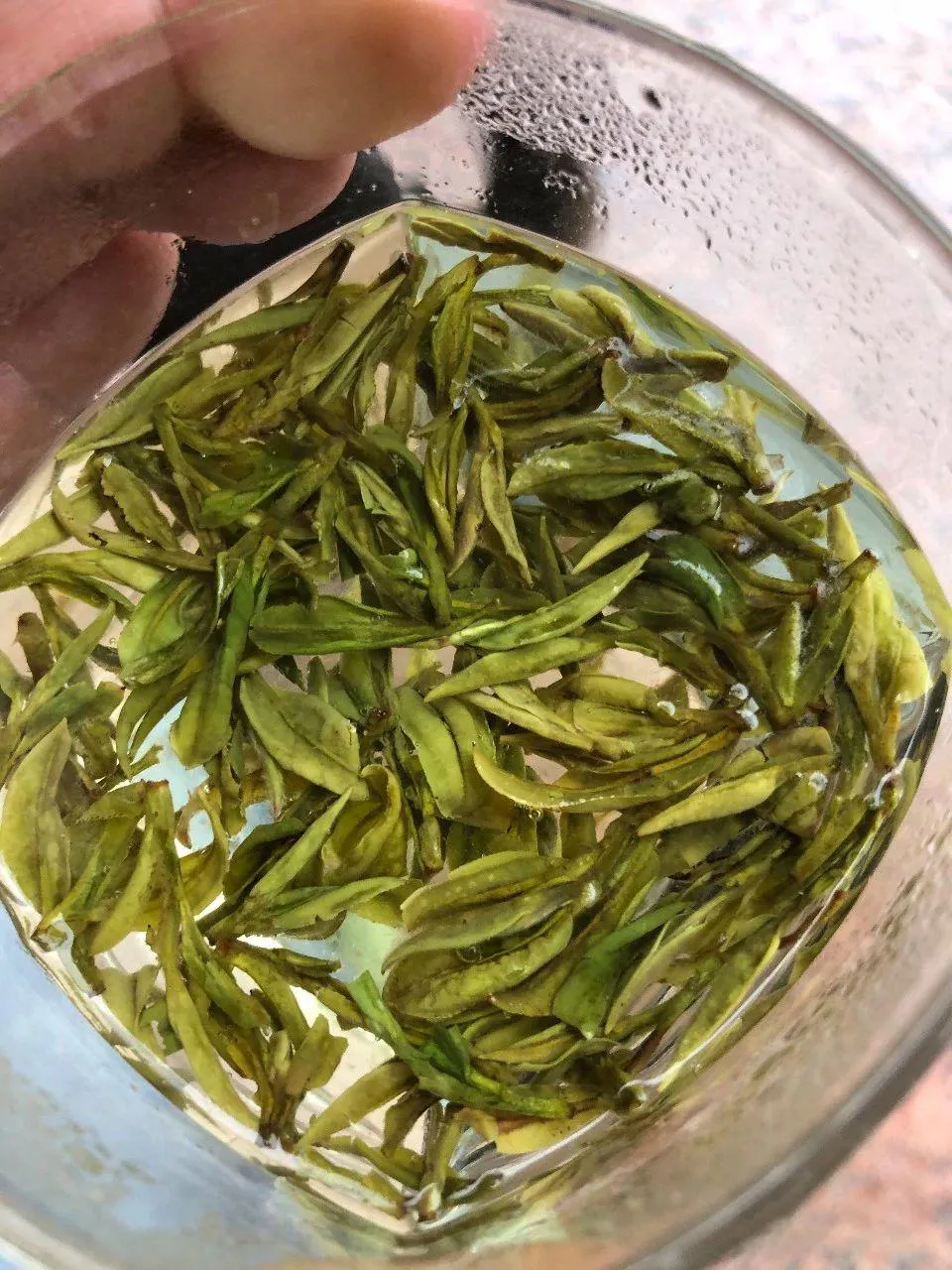
2023’s first-picked Shifeng Longjing tea buds are thin and small due to low temperatures
In Longjing tea, the ordinary variety offers a mild bean flower fragrance, while the finest Longjing teas exhibit a pure bean flower aroma, occasionally complemented by a subtle orchid note.
Shifeng Longjing, as the pinnacle of West Lake Longjing teas, typically boasts a delightful floral scent enriched with bean flower nuances, and experienced tea connoisseurs may even discern a delicate, milky undertone.
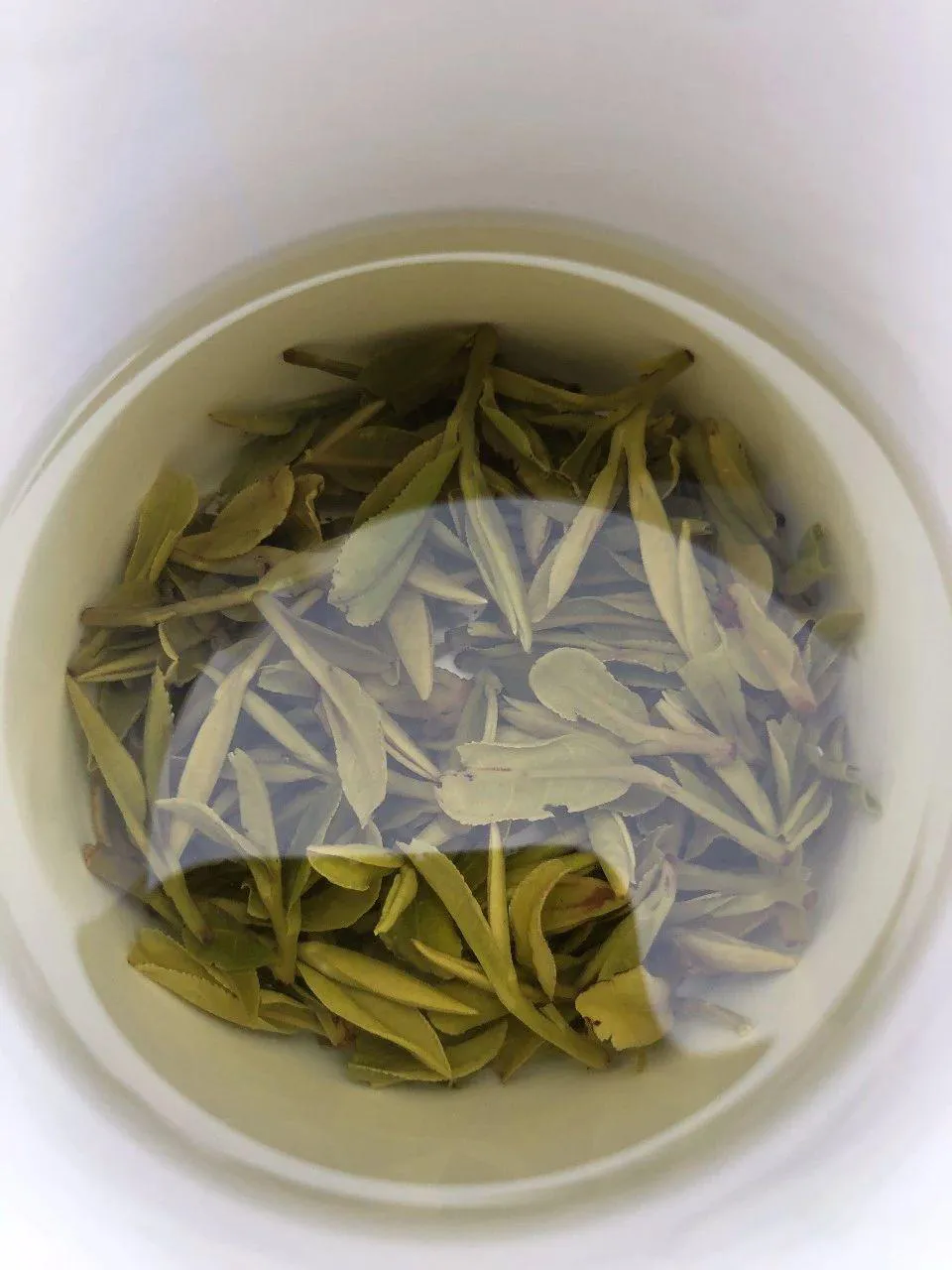
The leaves bottom of Shifeng Longjing tea
Most traditional Shifeng Longjing teas are cultivated from group cultivars, making them notably resilient regarding multiple infusions.
When skillfully prepared in a Gaiwan, these teas can yield 7-8 steepings, consistently offering a lingering sweetness and a soothing sensation.
What do I need to know about buying Shi Feng Longjing?
Be cautious, as many tea shops in China prominently display the “Shifeng Longjing” label.
In the West Lake Longjing production region, numerous vendors lay claim to selling authentic Shifeng Longjing tea.
However, the actual area of Shifeng Mountain is roughly 115.3 acres.
Even with the most optimistic yield estimate of 33lb per acre for pre-ming tea, the annual production of genuine pre-ming Shi Feng Longjing tea amounts to approximately 3805lb (though this figure may be lower in reality).
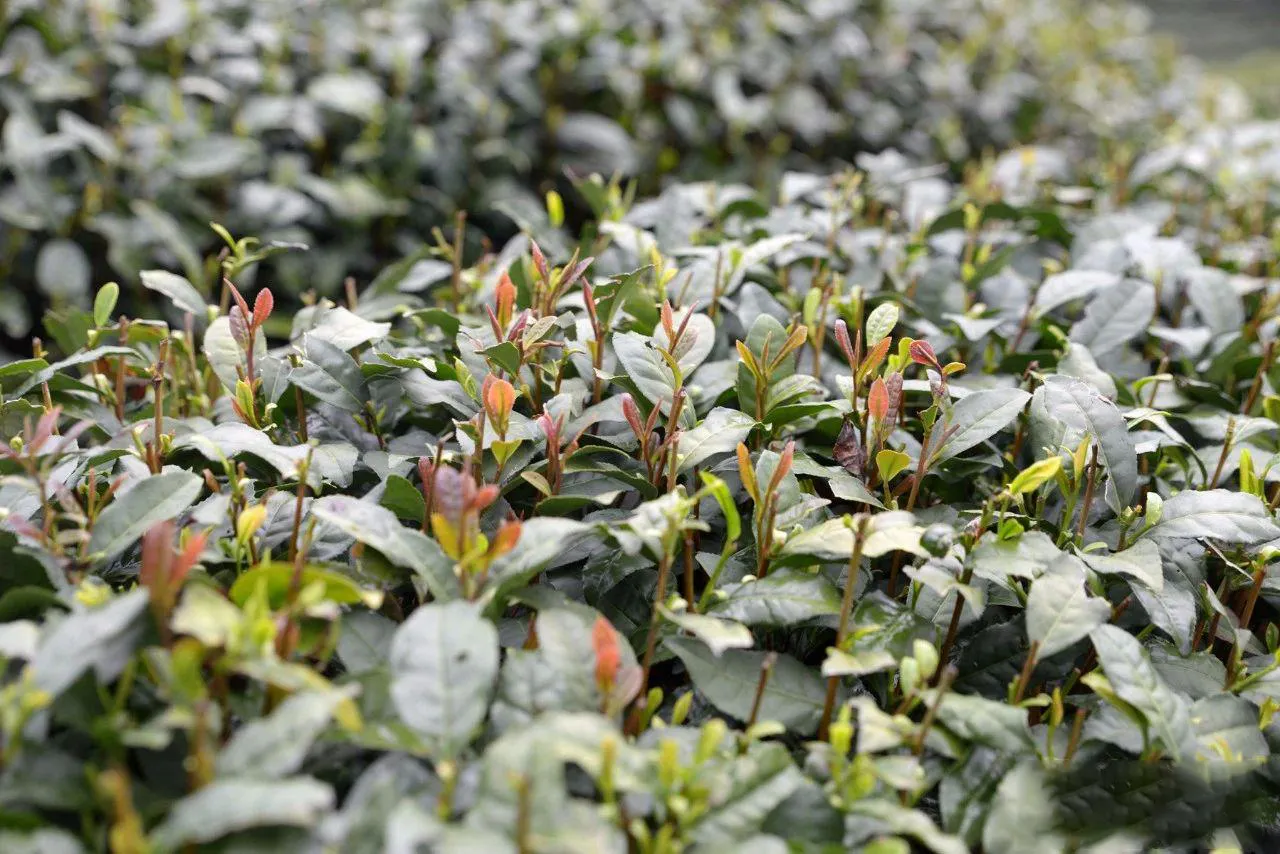
Shifeng Longjing tea from group cultivars
When compared to the vast consumer base, the production of Shifeng Longjing is indeed quite limited.
For the average person, acquiring authentic Shifeng Longjing can be a daunting task.
Frequently, the tea you purchase not only lacks origins from Shi Feng but may not even originate from the broader West Lake Longjing region.
Regrettably, I have seen instances where Wuniu Morning Tea was deceptively marketed as Shifeng Longjing.
Even within Hangzhou, it’s not uncommon for tea sellers to misrepresent other mountain-grown teas as Shifeng Longjing.
For newcomers to Longjing tea, distinguishing between genuine and counterfeit versions can prove challenging.
Choose a reliable source and exercise caution when presented with overly inexpensive options.
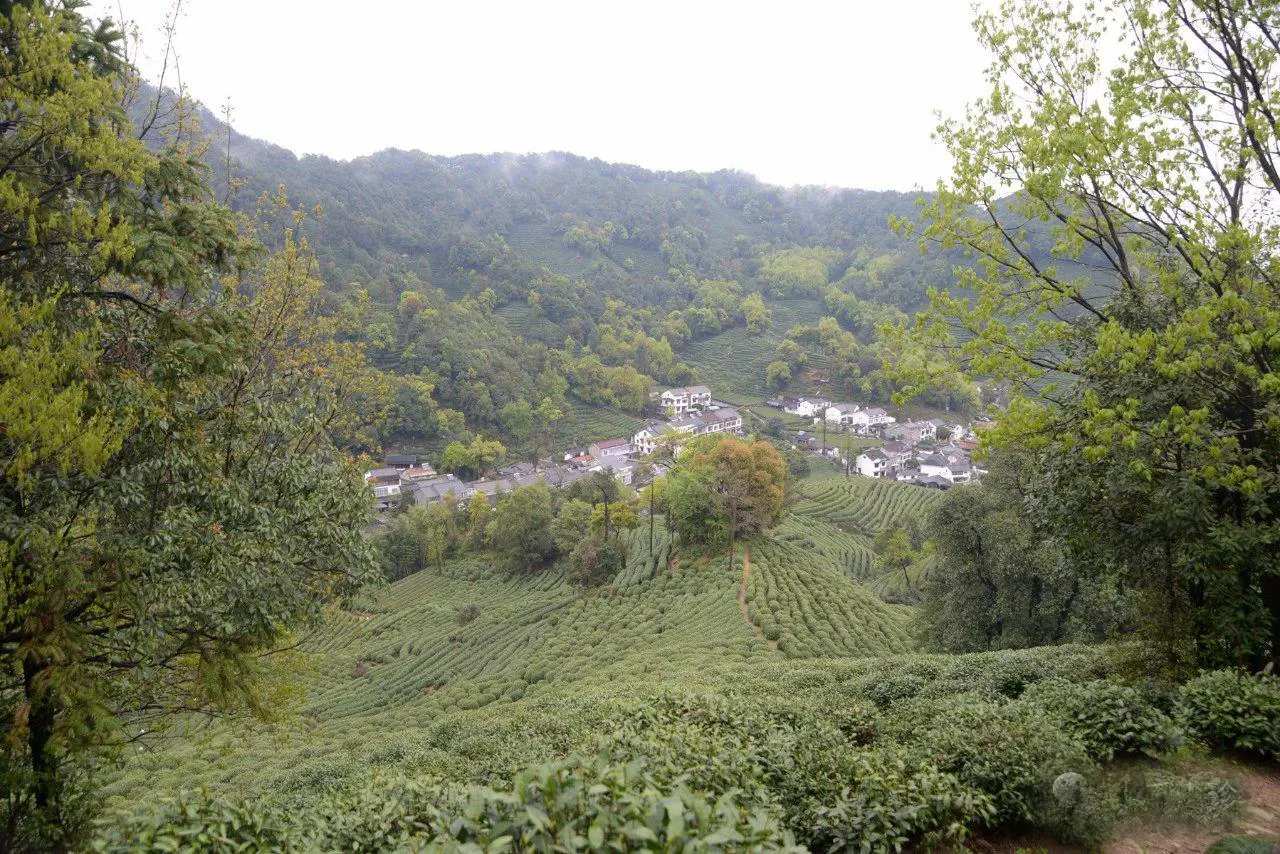
Longjing Village from Shifeng Mountain
Genuine Shifeng Longjing tea is rare and typically comes at a higher price point.
Even within Longjing Village, only some of the tea available for purchase is sourced from Shifeng Mountain, particularly those sold to tourists along the village’s main roads.
Some tea enthusiasts visiting Longjing Village might encounter tea labeled “Mingqian Shifeng Longjing” priced at $70-280 per 500g.
This may lead them to believe they are acquiring authentic tea due to the tender tea buds, uniform size, and vibrant green color.
However, it’s nearly impossible to find genuine Shi Feng Longjing for less than $410 per 500g, regardless of the source.
Fortunately, the government has recognized the issue of counterfeiting and has introduced labels issued by tea farmers in recent years, with each tag corresponding to 250g of tea.
I discussed this more in the article “Why is Longjing tea so expensive.”
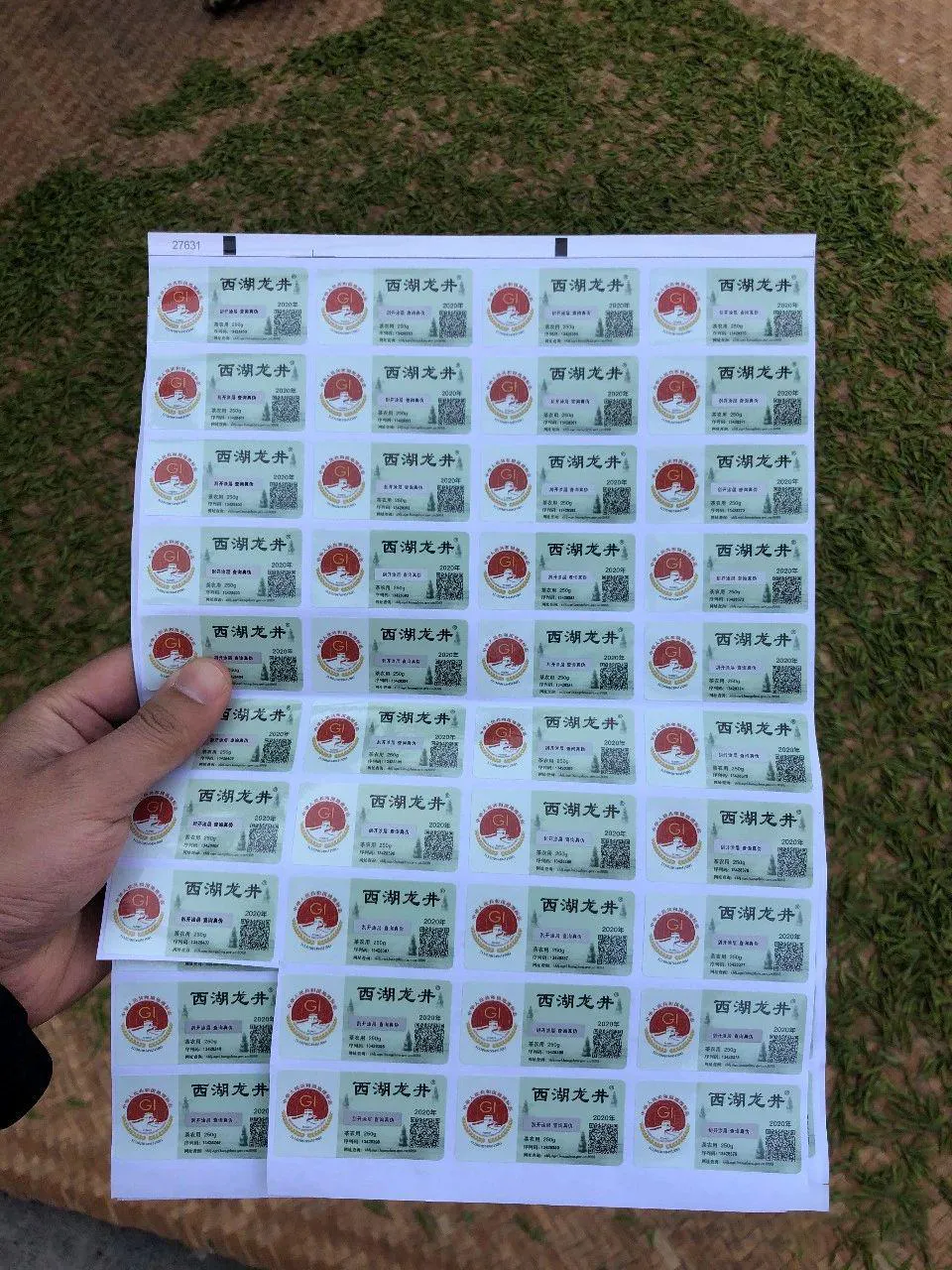
Xihu Longjing Tea Farmer Label (one label per 250g)
How to brew Shifeng Longjing?
To brew Shifeng Longjing, similar to other Longjing teas, you can use glass cups, using approximately 2-3 grams of tea per brewing.
Opt for pure water at a temperature range of 167-185℉ (75-85℃), or if available, Hangzhou’s pristine spring water for the best flavor.

Steps to steep Shifeng Longjing green tea
Most Longjing teas can be brewed for 3-4 batches in a glass cup, while Longjing Shifeng can yield 6-8 batches or more, provided you brew it correctly in a Gaiwan.
For an enhanced brewing experience, consider using a Gaiwan:
-
Begin by warming the Gaiwan, then add the Shifeng Longjing tea to the Gaiwan.
-
Shake it while it’s still hot to appreciate the dry aroma of the tea leaves.
-
Pour in water purified at 167-185℉ (75-85℃), leaving the lid uncovered. Allow the hot water to steep for 8-12 seconds, then decant the tea into a fairway cup.
-
Finally, distribute it into tasting cups for a delightful drinking experience.
This article will show you more details about how to brew dragon well tea.
How to store Shifeng Longjing tea?
To maintain the freshness of your Shifeng Longjing tea, it’s crucial to store it correctly. Here’s how:
- Select the Right Storage Location: Find a dry and cool place for storing your tea. Ensure it is away from direct sunlight, heat sources, and strong odors.
- Opt for an Airtight Container: Use an airtight container to store the tea. This container should be sealed tightly to prevent air entering, as oxygen can degrade the tea’s quality over time.
- Prevent Moisture and Flavor Transfer: Guard against moisture and flavor transfer by keeping the tea separate from strong-smelling items, such as spices or perfumes.
- Refrigeration Method: If you plan to store the tea for an extended period and won’t be using it soon, consider sealing the tea box in several layers of plastic bags before placing it in the refrigerator. Be sure not to freeze the tea, as freezing can affect its flavor and aroma.
- Bringing Tea to Room Temperature: When you’re ready to enjoy the tea, remove it from the refrigerator and let it come to room temperature before opening the container. This helps prevent condensation and moisture exposure, preserving the tea’s quality and extending its shelf life.
By following these storage guidelines, you can ensure that your Shifeng Longjing tea remains fresh and retains its exquisite flavor for an extended period.
Conclusion
As the top level of Longjing tea, Shi Feng Longjing tea is highly sought after by most Chinese green tea lovers, especially the Mingqian Shifeng Longjing, which is one of the best.
And it takes work to buy authentic long jing Shi Feng. I suggest those who are interested in buying to polish their eyes, refer to the right price, and try and drink it before making a decision.
Of course, I have some recommended purchasing channels, including Longjing tea and some other teas. You can collect likes by forwarding my social media to get freebies.


